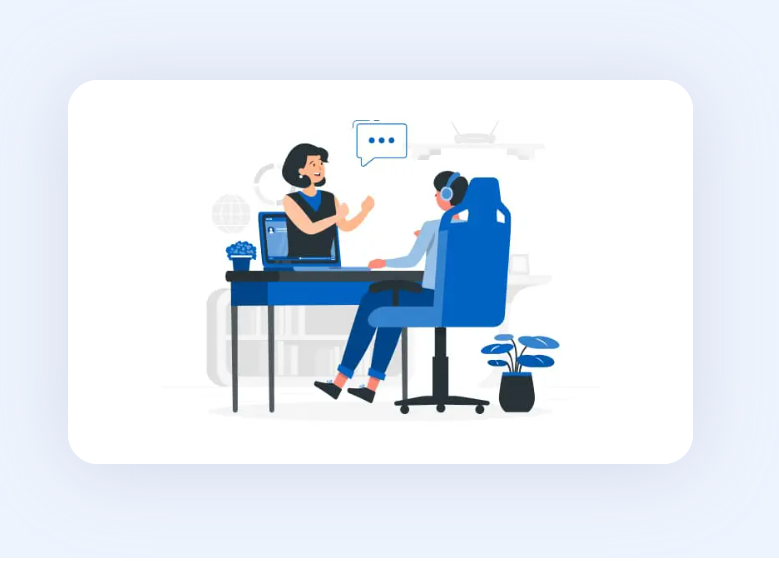The Ultimate Guide to E-Learning App Development

In today's fast-paced world, e-learning has become an indispensable tool for education and professional development. With the rise of digital technology, e-learning apps have revolutionized the way we learn, making education more accessible, flexible, and engaging than ever before. If you're considering venturing into the realm of e-learning app development, you're in the right place. In this comprehensive guide, we'll walk you through everything you need to know to create a successful e-learning app that stands out in the crowded market.
Understanding the Landscape of E-Learning Apps
Before delving into e-learning app development, it's crucial to grasp the current landscape of the industry. E-learning has experienced exponential growth in recent years, driven by factors such as advancements in technology, increasing internet penetration, and the growing demand for flexible learning solutions. According to recent statistics, the global e-learning market is projected to reach a staggering $375 billion by 2026, indicating immense opportunities for e-learning app developers.
Identifying Target Audience and Market Research
One of the first steps in e-learning app development is identifying your target audience and conducting thorough market research. Understanding the needs, preferences, and pain points of your target users is essential for creating a successful e-learning app. Conduct surveys, interviews, and competitor analysis to gain insights into the market landscape and identify gaps or opportunities that your e-learning app can capitalize on.
Defining Your Unique Selling Proposition (USP)
With countless e-learning apps available in the market, it's crucial to define your Unique Selling Proposition (USP) to differentiate your app from the competition. Whether it's offering specialized courses, innovative features, or a unique learning experience, your USP will play a significant role in attracting and retaining users.
Planning and Designing Your E-Learning App
Once you've identified your target audience and USP, it's time to move on to the planning and design phase of e-learning app development. Collaborate with UI/UX designers and software developers to create wireframes, mockups, and prototypes that align with your brand identity and provide an intuitive user experience. Pay special attention to navigation, visual design, and interactivity to ensure that your e-learning app is both visually appealing and easy to use.
Developing Engaging Content and Curriculum
At the heart of every e-learning app lies its content and curriculum. Invest in developing high-quality, engaging content that caters to the needs and interests of your target audience. Whether it's video lectures, interactive quizzes, or gamified learning modules, strive to make your e-learning app educational, entertaining, and effective in delivering learning outcomes.
Integrating Interactive Features and Technologies
To enhance the learning experience, consider integrating interactive features and technologies into your e-learning app. This could include virtual reality (VR) simulations, augmented reality (AR) overlays, chatbots for personalized assistance, or social learning features that facilitate collaboration and knowledge sharing among users.
Testing and Iterating for Continuous Improvement
Once your e-learning app is developed, it's essential to conduct rigorous testing to identify and address any bugs, glitches, or usability issues. User testing and feedback are invaluable in refining your app and ensuring that it meets the needs and expectations of your target audience. Continuously iterate and update your e-learning app based on user feedback and emerging trends to stay ahead of the competition.
Launching and Marketing Your E-Learning App
The launch of your e-learning app is a critical milestone that requires careful planning and execution. Develop a comprehensive marketing strategy that leverages digital marketing channels, social media, influencer partnerships, and content marketing to reach your target audience and generate buzz around your app. Offer free trials, discounts, or special promotions to incentivize early adoption and encourage users to try out your app.
Providing Ongoing Support and Updates
Launching your e-learning app is just the beginning of your journey. To ensure long-term success, provide ongoing customer support and regular updates to keep your app relevant and engaging. Listen to user feedback, monitor analytics, and stay abreast of industry trends to identify opportunities for improvement and innovation.
Conclusion
In conclusion, e-learning app development offers tremendous opportunities for innovation and growth in the education sector. By understanding your target audience, defining your USP, and delivering engaging content and interactive features, you can create a successful e-learning app that stands out in the competitive market. Remember to prioritize user experience, continuous improvement, and effective marketing to maximize the impact of your app and drive long-term success.
- Whats New
- Shopping
- Wellness
- Sports
- Theater
- Religion
- Party
- Networking
- Music
- Literature
- Art
- Health
- Games
- Food
- Drinks
- Fitness
- Gardening
- Dance
- Causes
- Film
- Crafts
- Other/General
- Cricket
- Grooming
- Technology

